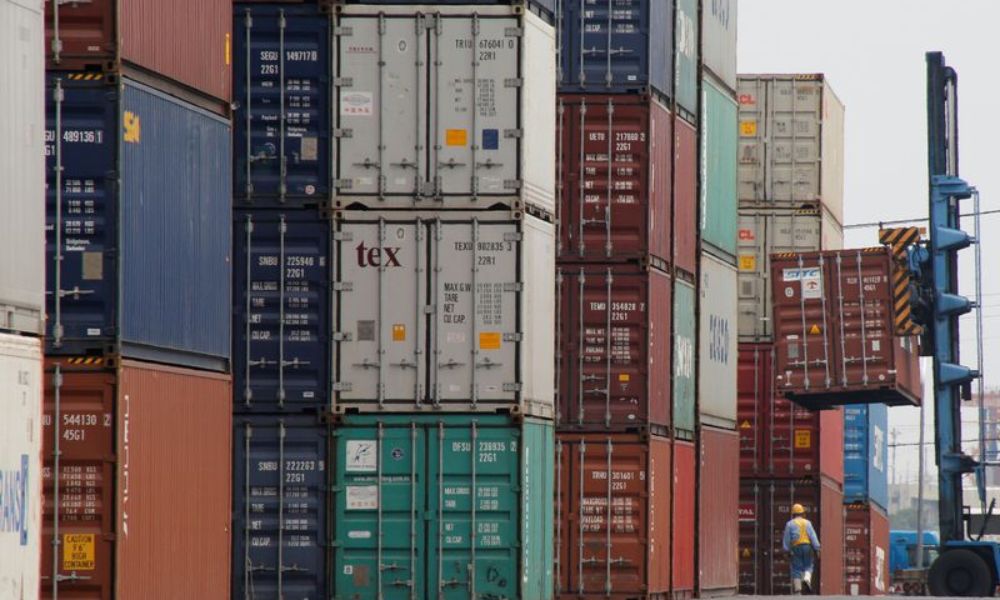
Japan's exports fell in July for the first time in nearly 2-1/2 years, dragged down by faltering demand for light oil and chip-making equipment, underlining concerns about a global recession as key markets like China weakened.
Ministry of Finance (MOF) data out Thursday showed Japanese exports fell 0.3% in July year-on-year, compared with a 0.8% decrease expected by economists in a Reuters poll. It followed a 1.5% rise in the previous month.
Separate data by the Cabinet Office showed a key gauge of capital expenditures rose in June. However, manufacturers are braced for core orders to slide during the current quarter, partly due to the impact from weak offshore demand.
Overall, the batch of data underscored fragility in Japan's export engine that helped underpin second quarter domestic product (GDP) growth, with car shipments and inbound tourism the biggest drivers.
| Are you a Tax Lawyer in USA? 👉Transform Your Brand: Click for Metamorphosis👈 |
Japanese policymakers are counting on exports to shore up the world's No. 3 economy and pick up the slack in private consumption that has suffered due to broader price hikes.
However, the spectre of a sharper global slowdown and faltering growth in its major market China have raised concerns about the outlook.
The concerns about global growth was underscored by separate data earlier showing persistent declines in Singapore's exports, seen as a gauge of overseas demand as trade flows dwarf the city-state's economy.
"China remains weak and I don't see demand from Europe and America to accelerate further," said Takeshi Minami, chief economist at Norinchukin Research institute, adding that Japan's economy may suffer a downturn in the current quarter.
By destination, exports to China, Japan's largest trading partner, fell 13.4% year-on-year in July, due to drops in shipments of cars, stainless steel and IC chips, following a 10.9% decline in June.
U.S.-bound shipments, Japan's key ally, rose 13.5% year-on-year last month to log the largest in value on record, led by shipments of electric vehicles and car parts, following a 11.7% rise in the previous month.
"The Bank of Japan must be aware of downside risks from the global economy. Therefore, it would have no choice but to avoid any efforts to normalise monetary policy for the time being given the risk from external slowdown," Minami said.
At its July meeting, the BOJ kept its yield curve control (YCC) targets unchanged but took steps to allow long-term interest rates to rise more freely in line with increasing inflation and growth.
Thursday's data also showed imports fell 13.5% in the year to July, versus the median estimate for a 14.7% decrease.
The trade balance swung to a deficit of 78.7 billion yen ($537.27 million), versus the median estimate for a 24.6 billion yen surplus. Separate data showed Japan's core machinery orders rose 2.7% in June from the previous month.
Compared with a year earlier, core orders, a highly volatile data series regarded as an indicator of capital spending in the coming six to nine months, declined 5.8%.
Manufacturers surveyed by the Cabinet Office forecast that core orders will fall 2.6% in the July-September quarter, which taken together with the weakness in exports suggest rising pressure on Japan's economy.
"On their own, the July trade figures still point to a small boost from net exports across Q3," said Marcel Thieliant, head of Asia-Pacific at Capital Economics. "But even if that were the case, GDP growth will surely slow sharply," he added.
($1 = 146.4800 yen)
|
HOT TOPICS |
|
 |
Thai Economy Expanding As Policy Rate Nears Stability Level - Central Bank Minutes |
 |
Hong Kong Stocks Slide Over 2% As Property Shares Sell Off; Country Garden Drops Nearly 15% |
 |